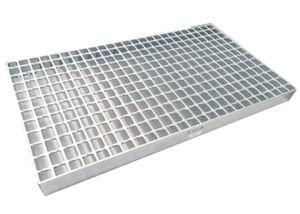Steel grating for seismic-resistant structures plays a crucial role in modern construction, especially in regions prone to earthquakes. These gratings are designed to provide structural integrity and safety, ensuring that buildings can withstand seismic forces. The use of ইস্পাত ঝাঁকুনি in seismic-resistant structures is essential due to its high strength-to-weight ratio, which allows for the construction of lighter yet robust buildings. This advantage not only reduces the overall weight of the structure, thus minimizing the seismic forces acting upon it, but also enhances the building’s ability to absorb and dissipate energy during an earthquake.
The design and engineering of steel grating for seismic-resistant structures involve meticulous planning and consideration of various factors such as load-bearing capacity, flexibility, and durability. Engineers must ensure that the gratings can accommodate the dynamic movements of a building during an earthquake. This requires the use of advanced materials and innovative design techniques to create gratings that are both strong and flexible. The integration of steel grating into the structural framework of a building provides additional support and stability, helping to prevent catastrophic failures during seismic events.
Incorporating steel grating into seismic-resistant structures also offers significant economic benefits. By reducing the overall weight of a building, construction costs can be lowered due to the decreased need for heavy foundation work and materials. উপরন্তু, the durability and longevity of steel gratings mean that maintenance costs are reduced over the life of the building. This makes steel grating an attractive option for developers and builders looking to construct cost-effective and resilient buildings in earthquake-prone areas.
The environmental benefits of using steel grating in seismic-resistant structures should not be overlooked. Steel is a recyclable material, which means that at the end of a building’s life, the steel grating can be repurposed or recycled, contributing to a more sustainable construction industry. Furthermore, the use of steel gratings can improve a building’s energy efficiency by allowing for better ventilation and natural light penetration, reducing the need for artificial lighting and climate control.

One of the key considerations when designing steel grating for seismic-resistant structures is the selection of the appropriate type of steel. High-strength, low-alloy steels are often used due to their enhanced mechanical properties and resistance to seismic forces. These steels can be engineered to provide the necessary balance between strength and flexibility, ensuring that the grating can withstand the dynamic stresses of an earthquake.
The installation process of steel grating in seismic-resistant structures requires precision and expertise. It is crucial that the gratings are securely fastened and integrated into the building’s framework to ensure maximum effectiveness. This often involves the use of specialized fasteners and techniques to ensure that the gratings remain in place during seismic activity. Proper installation is vital to the overall performance of the grating system and the safety of the building’s occupants.
Research and development in the field of steel grating for seismic-resistant structures continue to advance, with new materials and technologies being explored. Innovations such as smart materials that can adapt to changing conditions and advanced manufacturing techniques that allow for the creation of custom-designed gratings are paving the way for even more resilient structures. These advancements are crucial in improving the safety and performance of buildings in earthquake-prone regions.
The role of steel grating in seismic-resistant structures extends beyond just providing structural support. These gratings can also be used to enhance the aesthetic appeal of a building. Architectural designs can incorporate steel grating in creative ways, adding visual interest and character to a building’s facade. This dual functionality makes steel grating a versatile choice for architects and designers looking to create buildings that are both functional and visually appealing.
In summary, steel grating for seismic-resistant structures is an integral component of modern construction in earthquake-prone areas. Its ability to provide strength, flexibility, and economic benefits makes it an essential material for building safe and resilient structures. As technology and materials continue to evolve, the use of steel grating will likely become even more prevalent, offering new opportunities for innovation and sustainability in the construction industry.
The future of ইস্পাত ঝাঁকুনি in seismic-resistant structures looks promising, with ongoing research focused on improving its performance and reducing costs. As the demand for safer and more resilient buildings continues to grow, the construction industry will increasingly rely on steel grating to meet these needs. With its proven track record and potential for innovation, steel grating will remain a key player in the development of seismic-resistant structures.

